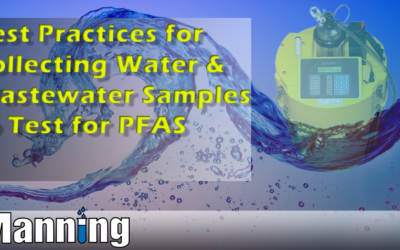Peristaltic Pumps and Their Tubing: An In-Depth Analysis for Wastewater Treatment Plant Operators
Peristaltic pumps play a critical role in wastewater treatment plants. They are used in many different aspects of Plant operation, from chemical feeds to autosamplers. This article delves into the functioning of peristaltic pumps used with autosamplers, factors affecting their performance, the tubing used in the autosampler wastewater world, and the compatibility of tubing between different manufacturers.
Peristaltic Pump: The Basic Principle
Peristaltic pumps are named after peristalsis, the contractions of the intestines that move digested material through your personal waste plant. These pumps are a type of positive displacement pump that uses a series of rollers or shoes to compress a flexible tube and move that compressed point along the tube, creating a peristaltic wave that propels fluid forward. A second point is compressed before the first point is released, capturing material between these two points. It is this sequential compressing, moving, and releasing of the tube, which forces the fluid to move in one direction. This process ensures a consistent flow rate and minimizes the risk of contamination, as the fluid only contacts the interior of the tube.
While the basic concept is the same between these pumps the size and designs vary greatly.
Components of a Peristaltic Pump
A peristaltic pump comprises the following main components:
- Pump Head: The pump head houses the tubing and rollers or shoes, providing the structure for the peristaltic action to occur.
- Tubing: A flexible tube, typically made of elastomeric material, is the primary component in contact with the fluid being pumped. It is essential to select the right tubing material, considering the pump design and the fluid’s chemical properties and temperature.
- Rollers or Shoes: Rollers or shoes are typically mounted on a rotor and provide the compressive force necessary to create the peristaltic wave. The number of rollers or shoes affects the pump’s efficiency, pulsation, and flow rate.
- Motor: The motor drives the rotor, which in turn moves the rollers or shoes. The motor can be either a fixed-speed or variable-speed type, depending on the application requirements.
Important Factors for Optimal Pump Performance
Several factors affect the performance of peristaltic pumps and the compatibility of the tubing used in them. The main mechanical factors of the pump and the properties of the tubing are:
1. Rotation Speed
The rotation speed of the pump determines the flow rate of the fluid being pumped. Higher rotation speeds result in faster flow rates, while lower speeds produce slower flow rates. The rotational speed also affects the time the pump tube has to expand to its original shape pulling in material into the compression area. Different tubing formulas expand at different rates so it is essential to have a complete design matching the tube and the rotation speed of the specific pump to ensure accurate and efficient fluid handling.
2. Squeeze between the Roller and Pump Wall
The tubing is squeezed between the roller and the pump wall to create the peristaltic wave and the amount of squeeze affects the tube’s lifespan and the pump’s efficiency. Excessive squeeze can lead to premature tube wear and reduced pump performance, while insufficient squeeze can result in incomplete sealing and reduced accuracy in fluid handling.
3. Tubing properties and formulation
All pump tubing is not the same so the choice of tubing is also crucial, as it must work in conjunction with the pump’s mechanical factors to ensure optimal performance.
Pump tube varies greatly in their properties such as size, formulation, and stiffness. These qualities are often based on the specific formula and the curing process for the tube.
A tube must have the correct properties for the pump to provide performance and tube life. Using a tube with the wrong properties can cause poor performance and potentially damage the pump. Some qualities are difficult to measure such as the rebound of the tube after being compressed. When there are qualities that can not be easily measured manufacturers test the tubes in the pumps to ensure they perform well in a specific pump.
Compatibility of Tubing Between Manufacturers
One common question among wastewater treatment plant operators is whether tubing can be used interchangeably between different manufacturers’ pumps. The answer is typically no, due to differences in pump design, rotation speed, and squeeze between the roller and the pump wall.
These variations can lead to compatibility issues and reduced performance when using tubing from one manufacturer in a pump from another manufacturer. Therefore, it is crucial to ensure the correct tubing is used for the specific pump model.
Why Won’t Tubing Work Between Manufacturers?
While it may be tempting to use tubing interchangeably between different manufacturers’ pumps, there are several reasons why this can lead to suboptimal performance and potential damage to the pump or tubing. Some of the reasons are:
1. Variations in Pump Design
Different manufacturers may have unique pump designs that affect how the tubing is installed, squeezed, and engaged with the pump’s rollers. These design variations can lead to compatibility issues when using tubing from one manufacturer in another manufacturer’s pump.
2. Differences in Tube Material and Dimensions
Different manufacturers may use tubing with varying materials, wall thicknesses, and inner diameters, which can affect how the tubing interacts with the pump. Using tubing with an incorrect wall thickness or diameter can result in incomplete sealing, leakage, or excessive wear on both the pump and the tubing.
3. Distinct Mechanical Factors
As mentioned earlier, mechanical factors like rotation speed and the amount of squeeze between the roller and the pump wall can differ between manufacturers. Using incompatible tubing may lead to inadequate or excessive squeeze, affecting the accuracy of fluid handling, causing premature wear on the tubing, or reducing the overall efficiency of the pump.
Manufacturers often provide specific recommendations for tubing based on rigorous testing and research. Using tubing that hasn’t been approved or recommended by the pump manufacturer can void warranties, compromise pump performance, and increase the risk of pump or tubing failure.
Cost-Effective Tubing Solutions: Manning Environmental Compatible Tubing for ISCO and Hach Pumps
Manning Environmental is not only a producer of peristaltic pumps but also a provider of compatible tubing for ISCO and Hach pumps.
You may ask how can we do that after talking about using the proper tube in a peristaltic pump. The tubes we offer have been extensively tested in ISCO and Hach pumps, they have the same dimension, and the same durometer (a measure of a tube ability to resist deflection). Tens of thousands of tubes have been sold and worked well.
They offer high-quality, cost-effective tubing solutions that can be used with various ISCO and Hach pump models, providing an affordable alternative to OEM tubing. Most autosamplers use one of three types of tubing which Manning categorizes as Type 1, Type 2, and Type M.
Below is a table outlining the compatible tubing offered by Manning Environmental for different ISCO and Hach pump models:
| Manning Designation | Manufacturer | Used On PUMP | Used On DISCHARGE |
| TYPE 1 TUBING | ISCO | Series: 37XX, GLS, Glacier | Series: 37XX, GLS, Glacier, 58XX, 47XX, 67XX, Avalanche |
| TYPE 1 TUBING | Hach | ALL UNITS | |
| TYPE 2 TUBING | ISCO | Series: 5800, 4700, 6700, Avalanche | |
| TYPE M TUBING | MEI | Manning All Units |
Manning Environmental’s tubing is available at a significantly lower price than OEM tubing, making it an attractive option for wastewater treatment plant operators looking to minimize costs without compromising on quality and performance.
In conclusion, understanding the intricacies of peristaltic pumps and their tubing is crucial for wastewater treatment plant operators to ensure accurate, efficient, and reliable fluid handling. By selecting the appropriate pump model and compatible tubing, operators can maximize pump performance, reduce maintenance costs, and improve overall operational efficiency in their wastewater treatment plants.



